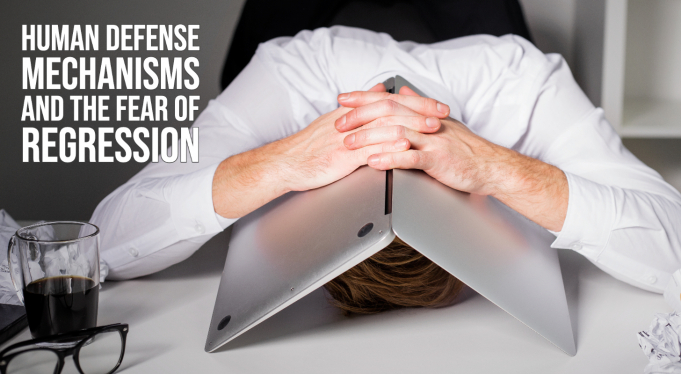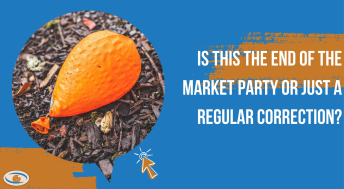Pre-Conditioned Defense Mechanisms
As humans, we all come pre-wired with defense mechanisms, and in this blog, we are going to be talking about the defense mechanism to protect oneself in the face of fear. When presented with a threat, our human defense mechanism is to engage in fear mode and prioritize protection. In relation to the financial world, this means that when we sense our finances being threatened to regress (ie. stock market decline), our human instinct is to find ways to prevent that from happening. In most other senses (non-financial related) this behavior is effective, however, in terms of the stock market, making impulse decisions as an attempt to protect ourselves is often counterproductive.
These actions explain why financial headlines of fear and imminent danger grab our attention much more than headlines promoting a rosy stock market outlook. Many investors refer to the recessions and bear markets of the past as future events to avoid, but less frequently talked about are the long-running bull markets and melt-ups that have occurred over the years. This is all ingrained in our human behaviors to make specific notes of the events that could cause us to regress, as opposed to the opportunities or previous events that enabled us to progress.
Countering One’s Psyche
We find that, albeit counterintuitive, stocks become riskier as they increase in price and less risky as they decrease in price. A fundamentally sound and financially healthy company that has decreased in price is typically one that we would identify as being closer to ‘on-sale’ rather than at ‘a premium’. Although, during market corrections, one of our first instincts is to question our previous beliefs and start doubting the long-term potential of one’s holdings. After enduring several declines in the market and studying previous market behavior, it becomes a conscious effort to bypass one’s psyche of fear and doubt and instead embrace the opportunities that lie ahead. Unlike the human instinct of fleeing dangerous situations and protecting oneself, fleeing the stock market in times of fear has proven to be a grave mistake.
S&P 500 Makes an All-Time High Every 20 Days on Average
In late 2021, the S&P 500 notched a new all-time high, and this has been occurring since its inception over 100 years ago. This implies that whenever there is a drawdown in price, the longer that the drawdown occurs, the closer the market is to a new all-time high. Human intuition, on the other hand, would state that the longer the market has gone without making a new all-time high, the more we are tempted to abandon it. Through analyzing the returns of the S&P 500 over the past 62 years (since 1960) we have determined that the market makes a new all-time high on average about every 20 days, and this represents about 8% of the time. This means that on average the market hits an all-time high just 19 times a year. This may strike us as odd at first, that only 8% of the year is spent at an all-time high, yet the important fact is that all-time highs are made every 20 days. Below, we have analyzed the periods over the past 62 years when an all-time high was not made after 20 days, and what the following one-year, two-year, three-year, and five-year returns were from that period.
We have outlined in green the two best returns for each timeframe, and currently, the market is three days away from entering the ‘Three-Months Without an All-Time High’ bracket. What we can see is that if an all-time high was not made after one month, the short-term returns (one-year) would be quite good at 9%, however, on a long timeframe (two, three, and five years) this investor would underperform another investor that bought after three- and six months of not making an all-time high. Historically, the best long-term returns were awarded to the investor that bought following a three- and six-month period without making all-time highs. This is not to say that we believe investors should only buy after a three or six-month decline, but that history has shown the longer the correction, the higher the long-term returns over an extended period. Oddly enough, buying at all-time highs has also proven to yield positive long-term returns, but the long-term returns (five years) are unmatched against buying in a period of sustained drawdowns (three- and six months).
Annualized Returns
Looking at the same figures but on an annualized basis, we can see that the long-term returns between buying after one month without an all-time high are closer to 8% and buying after three- and six months without an all-time higher are closer to 9%. This may not seem like a big difference but being able to increase an annualized return by 1% over a period of five years can make a large impact on one’s portfolio.
Ending Thoughts
While the numbers that we have presented point to an investor earning better long-term returns during periods of sustained market declines, whether the market is undergoing a five-day, three-month, or one-year correction we believe that investors should feel confident in the long-term history of the S&P 500. Not all future returns can be predicted by studying the past, and this time may be different, but there is also a saying that the ‘trend is your friend’.
Research for today, invest for tomorrow.







Comments
Login to post a comment.